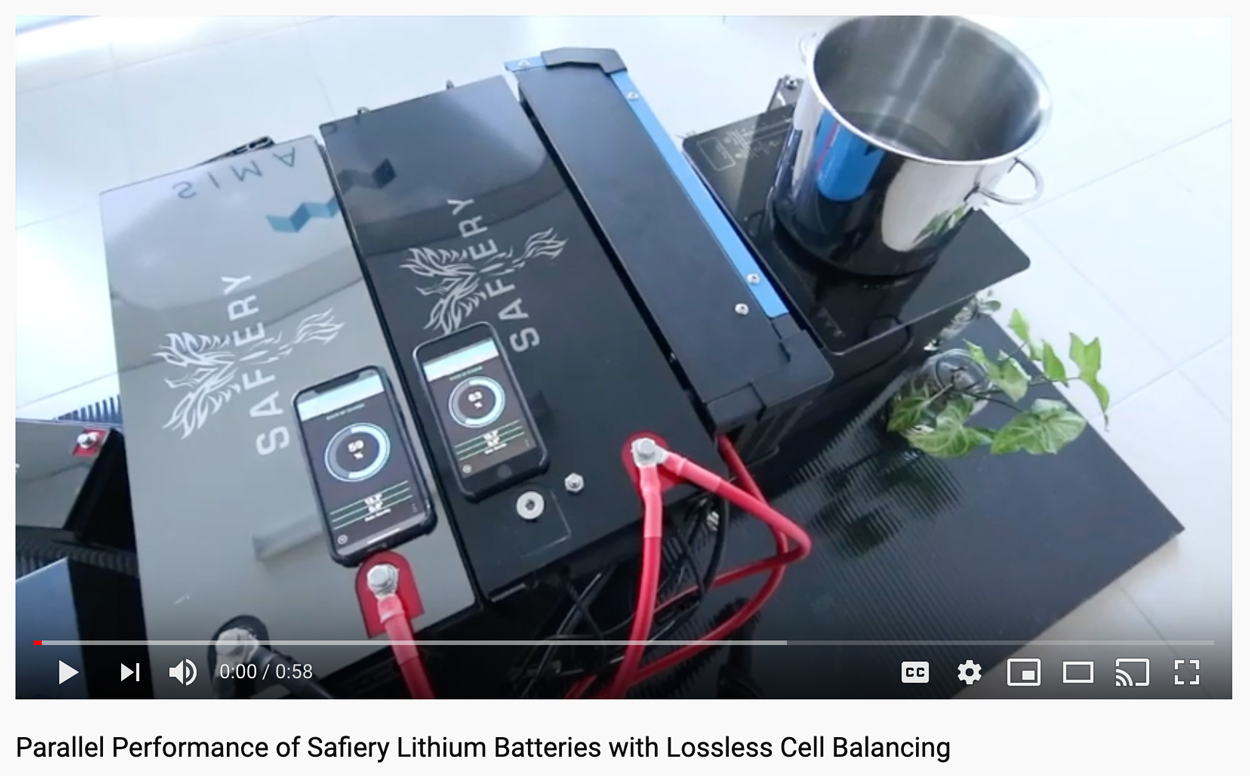
SAFIERY UNIVERSITY
PARALLEL CONNECTION
LITHIUM BATTERIES IS
STANDARD WITH LOSSLESS CELL BALANCING TECHNOLOGY
This article is designed to give assurance to the reader that parallel connections of Safiery Lithium batteries is easy and safe. In fact with our 48V batteries, there is 10 year warranty and Clean Energy Council Approval for parallel connections. It is now common place with Lithium technology.
If you have watched a Video on the dangers of parallelizing Lithium batteries, park that video with the “flat earth” believers. Some suppliers have made a marketing decision to not pay the extra money for lossless cell balancing so that they can push consumers to upgrade to a larger single battery pack. Buyer, beware….
Rather than bamboozle people with technology talk, watch the video proof here…
Lossless Cell Balancing
Lossless balancing is a recently developed method that reduces losses by reducing the hardware components and providing more software control. This also makes the system simpler and more easier to design. This method uses a matrix switching circuit which provides the capability to add or remove a cell from a pack during charging and discharging. A simple matrix switching circuit for eight cells is shown below.
During charging process the cell which is of high voltage will be removed from the pack using the switch arrangements. In the above figure the cell 5 is removed from the pack by using the switches. Consider the red line circles to be open switches and the blue line circle to be closed switches. Thus the rest time of the weaker cells are increased during the charging process so as to balance them during charging. But the charging voltage has to be adjusted accordingly.
When there are multiple batteries, the maximum cell voltage of all connected batteries is shared using communication over the battery terminals. There will be a limit to the number of batteries and cells, that can be connected. This way multiple battery cells are balanced.
This method is superior to either Active or Passive Cell Balancing
|
SAFIERY 200Ah Parallel Test |
|||
|
Discharging 180A |
Charging 10A |
||
|
During test |
After Test |
After Test |
|
|
mV |
mV |
mV |
|
|
Highest |
3,233 |
3,283 |
3,310 |
|
Lowest |
3,189 |
3,266 |
3,296 |
|
Variation |
44 |
17 |
14 |
| Unbalanced % |
1.36% |
0.52% |
0.42% |
The video Shows that the unbalanced % decreases substantially when parallelized and back on charge. It will move to the standard deviation of less than 0.4%.
Parallel and Series Limits with Safiery Lithium Batteries.
- Parallel connection of up to 6 batteries.
- Series connection of up to 4 batteries (48V).
- Parallel and then series connection of 6 batteries for 24V and 600Ah Capacity
Permanent Capacity Loss.
Permanent capacity loss, as the name implies, refers to permanent loss that is not recoverable by charging.
- Permanent capacity loss is mainly due to the number of full charge/discharge cycles, battery voltage and temperature.
- The more time the battery remains at 100% charge level, the faster the capacity loss occurs.
- This is true whether the battery is being charged or just in a fully charged condition.
- Always maintaining a Lithium battery in a fully charged condition will shorten its lifetime.
- The chemical changes that shorten the battery lifetime begin when it is manufactured, and these changes are accelerated by high float voltage and high temperature.
- Permanent capacity loss can be held to a minimum by observing good battery practices when charging, discharging or storing the battery.
- Safiery is committed to Smart Victron battery chargers with “storage mode” that reduces the float voltage automatically in storage.


